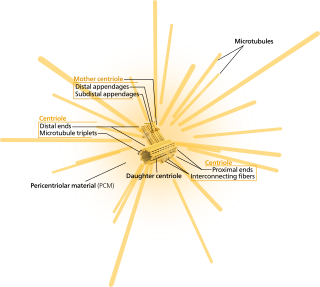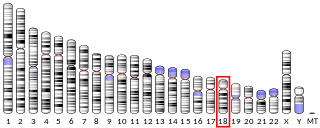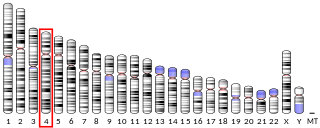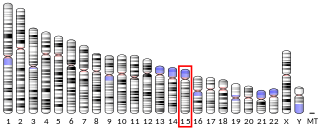 W
WIn cell biology, the centrosome is an organelle that serves as the main microtubule organizing center (MTOC) of the animal cell, as well as a regulator of cell-cycle progression. The centrosome is thought to have evolved only in the metazoan lineage of eukaryotic cells. Fungi and plants lack centrosomes and therefore use other structures to organize their microtubules. Although the centrosome has a key role in efficient mitosis in animal cells, it is not essential in certain fly and flatworm species.
 W
WAn aster is a cellular structure shaped like a star, consisting of a centrosome and its associated microtubules during the early stages of mitosis in an animal cell. Asters do not form during mitosis in plants. Astral rays, composed of microtubules, radiate from the centrosphere and look like a cloud. Astral rays are one variant of microtubule which comes out of the centrosome; others include kinetochore microtubules and polar microtubules.
 W
WCDK5 regulatory subunit-associated protein 2 is a protein that in humans is encoded by the CDK5RAP2 gene. It has necessary roles in the formation and stability of microtubules from the centrosome and has been found to be linked to human brain size variation in males. Multiple transcript variants exist for this gene, but the full-length nature of only two has been determined.
 W
WIn cell biology a centriole is a cylindrical organelle composed mainly of a protein called tubulin. Centrioles are found in most eukaryotic cells. A bound pair of centrioles, surrounded by a highly ordered mass of dense material, called the pericentriolar material (PCM), makes up a structure called a centrosome.
 W
WCentrosomal protein 85 is a protein that in humans is encoded by the CEP85 gene.
 W
WCentrosomes are the major microtubule organizing centers (MTOC) in mammalian cells. Failure of centrosome regulation can cause mistakes in chromosome segregation and is associated with aneuploidy. A centrosome is composed of two orthogonal cylindrical proteins, called centrioles, which are surrounded by an electron and protein dense amorphous cloud of pericentriolar material (PCM). The PCM is essential for nucleation and organization of microtubules. The centrosome cycle is important to ensure that daughter cells receive a centrosome after cell division. As the cell cycle progresses, the centrosome undergoes a series of morphological and functional changes. Initiation of the centrosome cycle occurs early in the cell cycle in order to have two centrosomes by the time mitosis occurs.
 W
WCentrosomal protein of 55 kDa is a protein that in humans is encoded by the CEP55 gene.
 W
WCentrosomal protein of 57 kDa is a protein that in humans is encoded by the CEP57 gene.
 W
WCentrosomal protein of 63 kDa is a protein that in humans is encoded by the CEP63 gene. Several alternatively spliced transcript variants have been found, but their biological validity has not been determined.
 W
WCentrosomal protein of 68 kDa is a protein that in humans is encoded by the CEP68 gene. CEP68 is required for centrosome cohesion. It decorates fibres emanating from the proximal ends of centrioles. During mitosis, CEP68 dissociates from centrosomes. CEP68 and rootletin depend both on each other for centriole association, and both also require CEP250 for their function.
 W
WCentrosomal protein of 70 kDa is a protein that in humans is encoded by the CEP70 gene. The protein interacts with γ-tubulin through its coiled coil domains to localize at the centrosome. CEP70 is involved in organizing microtubules in interphase cells and is required for proper organization and orientation of the mitotic spindle.
 W
WCentrosomal protein of 72 kDa is a protein that in humans is encoded by the CEP72 gene.
 W
WCentrosomal protein of 76 kDa, also known as CEP76, is a protein that in humans is encoded by the CEP76 gene.
 W
WCentrosomal protein of 78 kDa, also known as Cep78, is a protein that in humans is encoded by the CEP78 gene.
 W
WCentrosomal protein 89, also known as Centrosomal protein of 89 kDa (CEP89), Centrosomal protein 123 (CEP123), or Coiled-coil domain-containing protein 123 is a protein that in humans is encoded by the CEP89 gene.
 W
WCentrosomal protein of 97 kDa (Cep97), also known as leucine-rich repeat and IQ domain-containing protein 2 (LRRIQ2), is a protein that in humans is encoded by the CEP97 gene.
 W
WCentrosomal protein 104kDa is a protein that in humans is encoded by the CEP104 gene. Like its Chlamydomonas ortholog, FAP256, it has been shown to localize to the distal ends of both centrioles in the absence of a cilium. During cilium formation, it is found at the tip of the elongating cilium.
 W
WCentrosomal protein of 120 kDa (Cep120), also known as coiled-coil domain-containing protein 100, is a protein that in humans is encoded by the CEP120 gene.
 W
WCentrosomal protein 128kDa is a protein that in humans is encoded by the CEP128 gene.
 W
W5-azacytidine-induced protein 1 is a protein that in humans is encoded by the AZI1 gene.
 W
WCentrosomal protein of 135 kDa is a protein that in humans is encoded by the CEP135 gene. It is part of the centrosome throughout the cell cycle, being distributed in the pericentriolar material. CEP135 is required for the centriolar localization of CEP250.
 W
WCentrosomal protein of 152 kDa, also known as Cep152, is a protein that in humans is encoded by the CEP152 gene. It is the ortholog of the Drosophila melanogaster gene asterless (asl) and both are required for centriole duplication.
 W
WCentrosomal protein of 164 kDa, also known as CEP164, is a protein that in humans is encoded by the CEP164 gene. Its function appears two be twofold: CEP164 is required for primary cilium formation. Furthermore, it is an important component in the response to DNA damage by UV light.
 W
WCentrosomal protein 170kDa, also known as CEP170, is a protein that in humans is encoded by the CEP170 gene.
 W
WCentrosomal protein of 192 kDa, also known as Cep192, is a protein that in humans is encoded by the CEP192 gene. It is the homolog of the C. elegans and D. melanogaster gene SPD-2.
 W
WCentrosome-associated protein CEP250 is a protein that in humans is encoded by the CEP250 gene. This gene encodes a core centrosomal protein required for centriole-centriole cohesion during interphase of the cell cycle. The encoded protein dissociates from the centrosomes when parental centrioles separate at the beginning of mitosis. The protein associates with and is phosphorylated by NIMA-related kinase 2, which is also associated with the centrosome. Furthermore, CEP135 is also required for the centriolar localization of CEP250.
 W
WCentrosomal protein of 290 kDa is a protein that in humans is encoded by the CEP290 gene. CEP290 is located on the Q arm of chromosome 12.
 W
WCentrosome-associated protein 350 is a protein that in humans is encoded by the CEP350 gene.
 W
WCentriolin is a protein that in humans is encoded by the CNTRL gene. It was previously known as CEP110.
 W
WProgesterone-induced-blocking factor 1 is a protein that in humans is encoded by the PIBF1 gene. It has been shown to localize to the centrosome and has also been named CEP90.